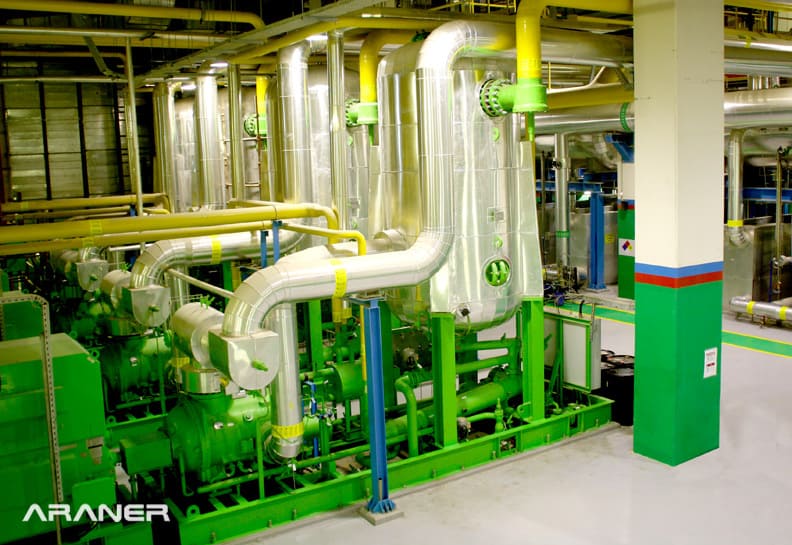Facilities, especially in Subtropical zone and Hot Summer Cold Winter zone, are turning to a better technology-District Cooling (DC). Studies have continually shown the superiority of DC over individual cooling systems. This modern mode of air conditioning a network of facilities in cities and other places features a central cooling plant and an underground piping network. The building receives the cold water, passes it through a heat exchanger, losses heat, before recirculating the warmer water back to the plant.
Importance of District Cooling
With a district cooling system installed by ARANER, you can take advantage of benefits such as huge cost savings, high efficiency, reliable cooling and huge cooling capacity running into tens of thousands of Tons of Refrigeration (TR). In summary, here are some other benefits:
- Recognized green technology
- Possibility of energy storage
- Expert operation and maintenance services
- Reduced carbon dioxide emissions
- Reduced peak electricity demand
In this comprehensive infographic you can learn more about the district cooling advantages:

DC Plant Design
ARANER district cooling systems are designed for maximum efficiency. Thus, the process features three important stages. The first stage is about establishing the simultaneity of the cooling demand of the consumers. A complex simulation of the DC load profile for a whole year follows this. Finally, we perform an analysis of the local cost of water and energy.

Chillers
Highly efficient industrial chillers from ARANER are important for lower energy consumption. Furthermore, they also reduce CO2 emissions and reduce total consumption of resources-water and electricity. The incredible flexibility of the chillers is enabled by their ability to use a wide range of refrigerants and motors. They also feature different methods of cooling and designs, and above all, they work with REMOTE INTEGRATED CONDENSATION (RIC) and Thermal Energy Storage technologies.
Heat Rejection
The available heat rejection technologies are water-cooled condenser, air-cooled condenser, and seawater cooled condenser. Each has its pros and cons, as you will note from the Guide of District Cooling Technologies. For example, the air-cooled condenser is ideal for dry remote areas because its water consumption is ZERO.
Therma Energy Storage
If you want to maximize the efficiency of a district cooling, the best option is to incorporate thermal energy storage ( TES) tank technology. It also accommodates ice storage option in case space for the tank is limited.
Control System
To crown everything, ARANER installs a state-of-the-art control system following the best practice in the industry. The system carries information for chillers, pumps, heat rejection devices and energy transfer stations (ETSs). Also covered are the preventive maintenance management system and the ETSs Consumption billing system.
Conclusion
For its countless features and benefits, DC is perfect for cooling hotels, retail facilities, offices, residential buildings and virtually any other large-scale facilities. You need to download the free District Cooling eBook to learn about the exciting capabilities of this technology as offered by ARANER.









